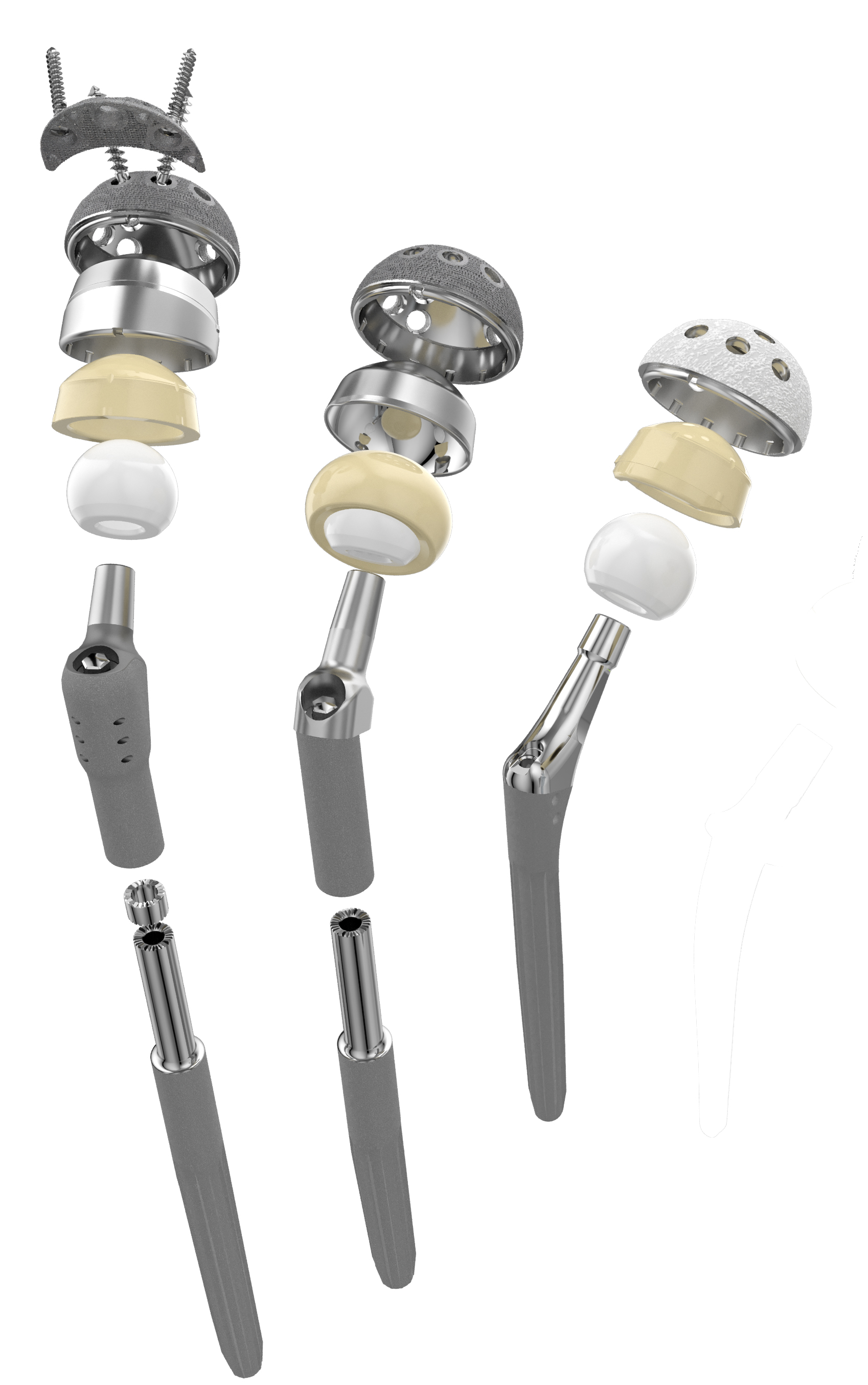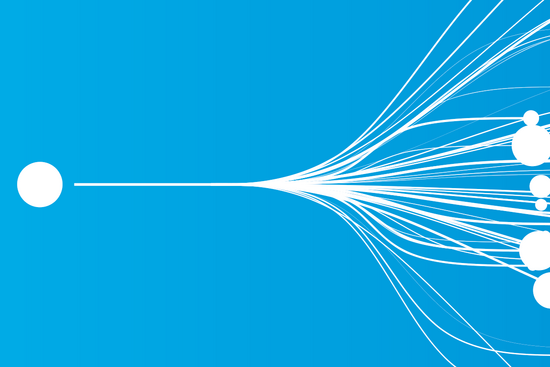The LINK Hip Revision Systems at a glance
directLINK 2/2022
The LINK Hip Revision Systems

LINK MP Reconstruction System Hip Stem with proximal intermediate ring and neck segments with suture holes and neck segment standard
The MP Reconstruction System (here the cementless version) combines all the advantages of a modular stem with the strong anchoring characteristics of a monoblock. Stem shape, elasticity and surface provide high osseointegration and strong primary stability. The modular connection is highly stable without proximal bone support, and the choice of anteversion, leg length correction and neck length is not dependent on distal fixation. More than 60,000 stems have been implanted since 1993, with a ten-year survival rate of 95.6 percent.
LINK MP Monoblock Hip Stem
The MP Monoblock is the shortest Wagner type revision stem on the market. The tapered stem (2 degrees) and wide rib geometry provide excellent axial stability with lower migration risk. The rough grid blasted Tilastane surface supports osseointegration and bone remodeling to provide long-term stability. The low risk of subsidence and the high offset version reduce the risk of dislocation to a minimum. The short taper and flattened neck provide a great range of motion.1, 2, 3
MobileLink Acetabular Cup System
The MobileLink is available with a cluster-hole and a multi-hole pressfit cup. Both versions are available with a PlasmaLink coating, a TiCaP double coating and a TrabecuLink surface. The TiCaP dual coating combines a highly porous surface to achieve primary fixation and an osteoconductive HX** calcium phosphate coating. The combination is designed to provide optimal primary and secondary stability through accelerated osseointegration.
MobileLink Inserts
In addition to ceramic and UHMWPE inserts, the MobileLink can be combined with modular offset and/or inclining casing/insert adapters (Face Changer). They allow the restoration of the ana-tomy and the necessary adjustments as well as the use of ceramic inserts for revisions. Dual Mobility Inserts made of EndoDur*** allow the MobileLink to be converted into a modular Dual Mobility System (DM), which reduces the risk of dislocation and increases the range of motion.4 The DM insert can accommodate DM-Liners from the BiMobile Dual Mobility System made of polyethylene.
Acetabular Cups
The acetabular cups are characterized by a secure fixation of the polyethylene inserts by a snap-lock mechanism as well as by conical coupling and antirotation tabs.
– TrabecuLink Cup, Multi-Hole
The three-dimensional TrabecuLink structure provides excellent cell filling with its pore size, porosity and type of structure.5, 6
– TiCaP-Cup, Multi-Hole
The combination of rough titanium plasma plus HX coating** promotes the bone ingrowth performance.7, 8
TrabecuLink Augments
The TrabecuLink Augments offer an attractive solution for segmental acetabular defects as an alternative to structural allografts. The biocompatible material Tilastan-E and the TrabecuLink structure provide excellent conditions for stable and durable restoration of bone defects. In addition, the three-dimensional TrabecuLink structure with its pore size, porosity and structural depth has an excellent basis for promoting osseointegration and microvascularization taking into account the requirements of the structure-covering protein layer (fibronectin-vitronectin-fibrinogen).9, 10 The augments can be combined with all LINK cups.
* E-Dur: Highly cross-linked UHMWPE with added vitamin E.
** HX: Rapidly soluble calcium phosphate
*** EndoDur: CoCrMo/ literature available by e-mailing to directlink@linkhh.de

More information about LINK‘s Hip Revision Systems can be found via the QR code shown or via www.link-hip.com
